Is Coffee with Baking Soda Better or Worse for Your Stomach Than Regular Coffee?
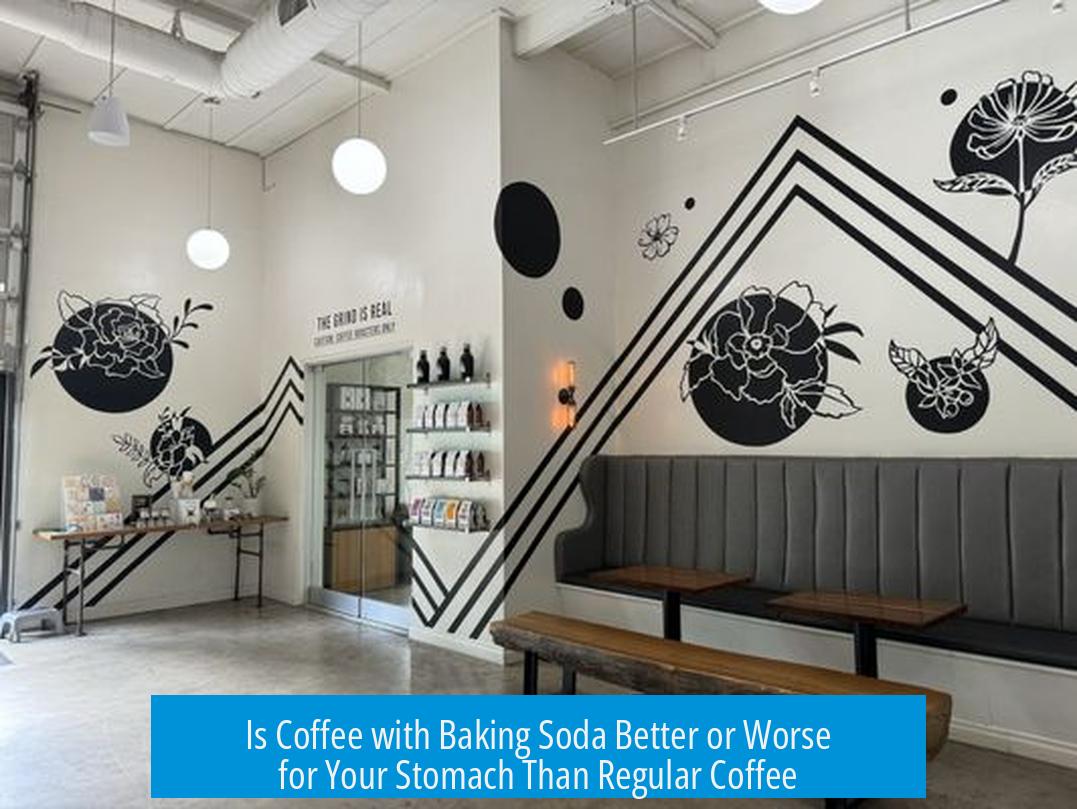
Adding baking soda to coffee neutralizes its acidity by chemically reacting with the coffee’s acids, which may reduce stomach irritation for some people. However, it alters the taste and carries risks if consumed in excess. There is no precise “golden ratio” for mixing baking soda with coffee because coffee’s acidity varies widely. For stomach comfort, using small amounts of baking soda or opting for alternatives like antacids or low-acid coffee is generally safer and more practical than trying to neutralize coffee at the source.
1. Understanding How Baking Soda Neutralizes Coffee Acidity
1.1 Chemistry of Neutralization
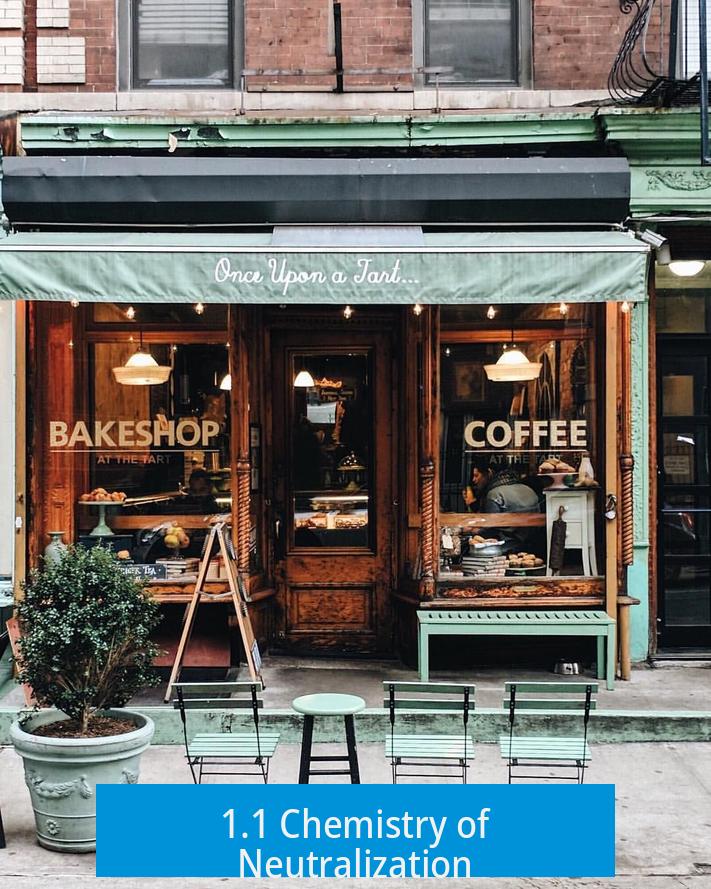
Baking soda is sodium bicarbonate (NaHCO3). When it encounters acid, it reacts to form a salt, water, and carbon dioxide gas. In coffee, organic acids (like chlorogenic acid derivatives) react with baking soda to produce sodium salts and carbon dioxide bubbles. This process reduces the acidity level in the liquid.
The reaction can be summarized as:
NaHCO3 + Acid → Salt + H2O + CO2 (gas)
This chemical reaction is safe. The sodium salts formed are not more harmful than coffee acids themselves.
1.2 Why Finding a “Golden Ratio” is Impractical
No fixed ratio exists for adding baking soda to coffee to neutralize acidity effectively. The acid concentration in coffee varies dramatically due to factors such as:
- Coffee bean type and blend
- Roast level (darker roasts are less acidic)
- Brewing method and water quality
- Brewing time and temperature
Because of these variables, exact calculation demands titration (a precise chemistry technique). Realistically, home users cannot measure the precise amount of baking soda needed for each batch safely or consistently.
2. Impact of Baking Soda on Coffee Taste
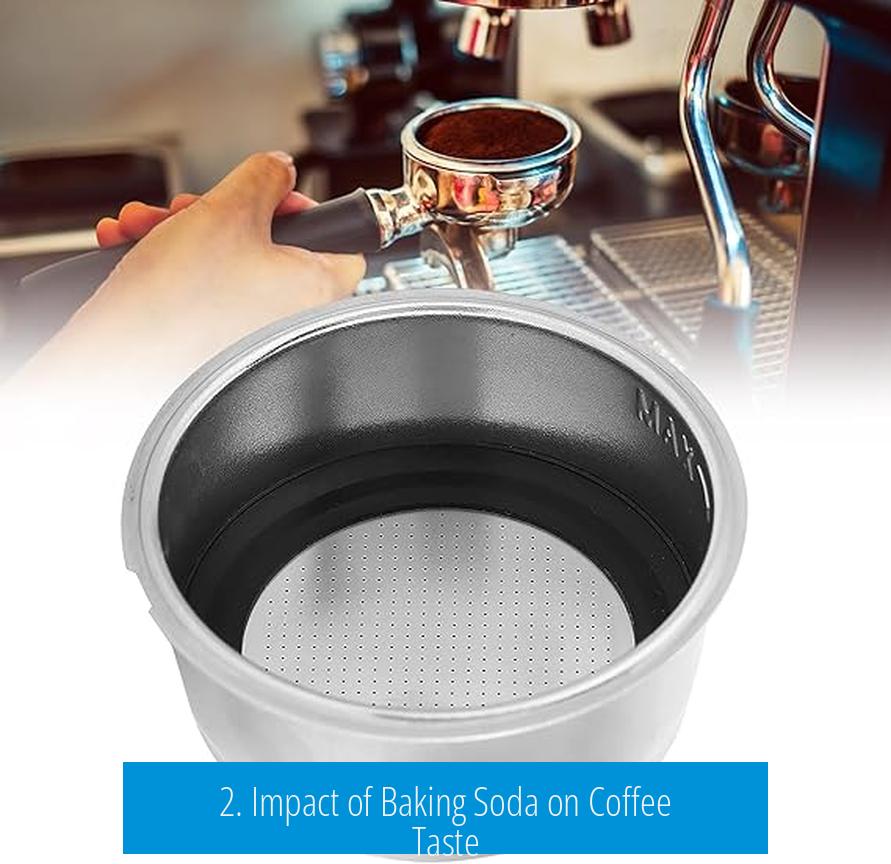
2.1 Taste Alterations Due to pH Changes
Neutralizing coffee acid with baking soda changes the taste profile significantly. By removing natural acidity, coffee loses brightness and complexity. The tannins and other phenolic compounds become more prominent, making the coffee taste starchy or metallic to some drinkers.
Many report that coffee treated with baking soda tastes flat or off-putting. This can discourage habitual drinking or spoil the intended coffee experience.
2.2 Taste Perception Varies by Consumer
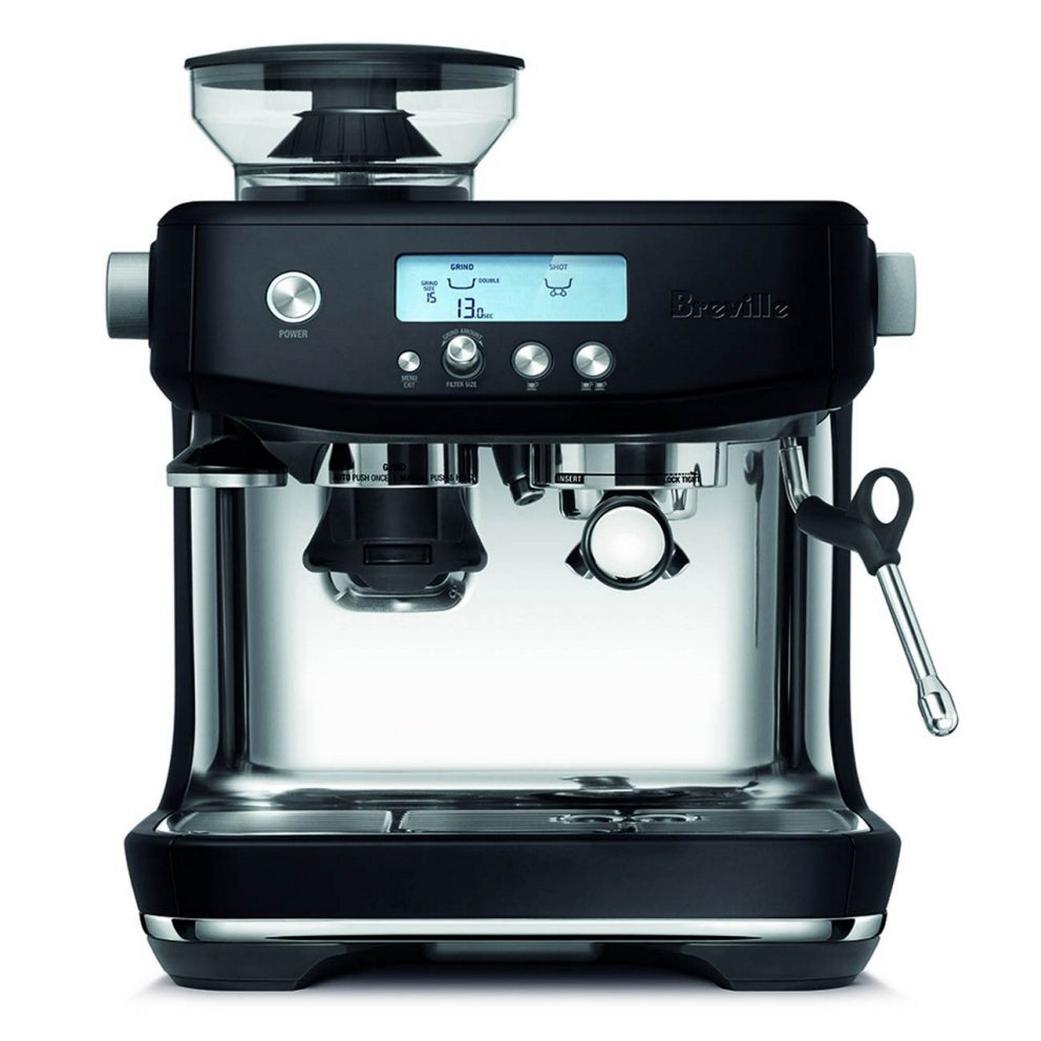
Some coffee drinkers prefer a smoother, less acidic taste and find baking soda makes coffee less harsh. For these individuals, especially those who favor dark roasts, baking soda may improve drinkability despite flavor changes.
Still, the majority find the altered taste undesirable. The tradeoff between acidity reduction and flavor loss is a key consideration.
3. Health Effects and Stomach Impact
3.1 Coffee Acidity and Stomach pH
Coffee acidity (pH around 5) is minor compared to stomach acid (pH about 1-2). Drinking coffee does not highly disrupt stomach acidity. In fact, coffee has less acid than many fruit juices like orange juice.
The volume of coffee relative to stomach acid is small, so the overall pH impact in the stomach is limited. Thus, acidity itself is unlikely the main culprit for stomach discomfort or acid reflux triggered by coffee.
3.2 Role of Caffeine in Stomach Discomfort and GERD
Current evidence points to caffeine, not acidity, as the prime factor causing gastroesophageal reflux and upset stomach from coffee. Caffeine relaxes the lower esophageal sphincter, allowing stomach acid backflow and causing heartburn symptoms.
The stimulant effect of caffeine and related compounds also enhances gastric activity, which can increase discomfort independent of acidity.
3.3 Risks of Adding Baking Soda to Coffee
Consuming baking soda in small quantities can act as an antacid, providing short-term relief. However, excess intake risks side effects such as:
- Nausea and vomiting
- Diarrhea and gas due to carbon dioxide formation
- Electrolyte imbalances and stomach distension in extreme cases
- High sodium load, problematic for those on salt-restricted diets
Frequent or large dosing of baking soda is unsafe.
3.4 Safer Approaches for Sensitive Stomachs
- Drink darker roast coffee, naturally less acidic
- Add milk or cream to buffer acidity
- Use commercial antacid tablets as needed
- Try low-acid coffee brands or alternative beverages
For those who find antacids ineffective but baking soda helpful, adding only a tiny pinch (approximately 1/8 teaspoon) per cup may provide relief without major health risks. But moderation is critical.
4. Practical Usage of Baking Soda in Coffee Brewing
4.1 Common Home Brewing Tips
- Adding baking soda during brewing rather than after helps neutralize acid evenly.
- Sprinkle a very small amount (a pinch, ~1/8 tsp) in the grounds before adding water.
- Some users do it in two stages: add baking soda with half the water, stir, then add the rest with a second pinch.
- Results vary by batch and personal preference; taste testing is necessary.
4.2 Limitations and Risks
The inability to precisely dose baking soda means some batches may be under-neutralized or over-neutralized. Too much baking soda causes an unpleasant flavor and health risks.
Also, excessive carbon dioxide gas production can lead to bloating or discomfort.
5. Alternatives to Using Baking Soda for Acidity Control
5.1 Other Beverages to Try
- Yerba mate: naturally milder on the stomach
- Matcha green tea: antioxidant-rich with less acidity
- Chicory coffee: caffeine-free and low-acid option
5.2 Brewing and Dietary Approaches
- Use paper filters which absorb some acidic compounds
- Add whey protein concentrates post-brew to bind acids
- Take L-theanine supplements with caffeine to reduce jitters and improve tolerance
6. Summary and Practical Recommendations
Adding baking soda to coffee is effective in neutralizing acidity but changes flavor and poses health risks if not used carefully.
- No reliable “golden ratio” exists for baking soda to coffee acid neutralization due to varying acid levels.
- A tiny pinch of baking soda per cup may reduce acid-induced discomfort for sensitive persons.
- Caffeine is more often the source of reflux and stomach upset rather than coffee acid.
- Antacids or dietary changes are safer, more consistent approaches.
- Multiple alternatives like darker roasts, milk addition, or different beverages reduce acidity burden.
- Flavor is generally degraded with baking soda; thus, careful personal taste evaluation is important.
- Excess sodium intake and CO2 production from baking soda are health concerns.
Key Takeaways
- Baking soda neutralizes coffee acids through chemical reaction but alters taste.
- No fixed baking soda amount fits all coffee types; exact dosing is impractical.
- Caffeine, not acidity, commonly causes stomach irritation from coffee.
- Small baking soda doses can reduce acidity but carry risks if overused.
- Better to consider antacids, dark roasts, or alternative beverages for sensitive stomachs.
Coffee + Baking Soda: Is It Better or Worse for Your Stomach Than Regular Coffee? What’s the Golden Ratio?
If you’re wondering whether stirring a little baking soda into your morning coffee to tame its acidity helps your stomach or ruins your brew, the honest answer is nuanced: adding baking soda can neutralize the coffee’s acids, but it changes the taste significantly, and its impact on stomach discomfort may be less than you hope. Plus, there’s no magic “golden ratio” to get it just right without lots of trial and error.
Let’s dive deeper into the chemistry, the stomach science, taste effects, and practical tips for coffee drinkers intrigued by this home remedy.
The Chemistry: How Baking Soda Neutralizes Coffee Acidity
Baking soda, or sodium bicarbonate (NaHCO3), is well-known for its ability to neutralize acids. When you mix it with acidic coffee compounds, it chemically reacts to form salts, water, and carbon dioxide gas. The reaction looks a bit like this:
NaHCO3 + Acid → Salt + H2O + CO2
While chem texts often use hydrochloric acid (HCl) as an example, coffee acids, which are organic, behave similarly. This neutralization reduces acidity without creating toxic byproducts. It’s a simple acid-base game that you’re playing in your cup.
But here’s the catch: each coffee brew’s acid profile varies widely. Different beans, roast levels, grinds, and brewing methods produce assorted acid levels. That’s making it impossible to nail down a universal “golden ratio” of baking soda to coffee acid.
Fact is, without a lab titration test for your specific coffee batch, estimating the exact baking soda amount is guesswork. Adding too much can over-neutralize, leaving your coffee tasting flat or chemically off. Add too little, and it won’t reduce acidity effectively.
Taste Test: How Does Baking Soda Affect Your Coffee’s Flavor?
Once budding baristas try this tip, opinions on taste vary from “meh” to “yikes.” Neutralizing acids sounds great in theory, but coffee flavor depends heavily on acid balance. Less acid equals less brightness and complexity.
Some tasters report that baking soda makes coffee taste starchy or even “banana-like,” emphasizing dull tannins lurking in the background. Others say it smooths out sharp edges, making the coffee less bitter, especially if they prefer dark, roasted profiles.
In other words, if you love vat-like dark roasts with muted acidity, it might not be so bad. But if you savor vibrant, fruity notes, baking soda can rob your cup of character.
The Stomach Truth: Coffee Acidity vs. Caffeine Impact
Which causes stomach distress—the acid in coffee or the caffeine? The current science points more toward caffeine as the culprit.
Firstly, coffee’s acidity (with pH often above 4) is way milder than you might think compared to stomach acid, which can have a pH around 1-2. In fact, coffee is less acidic than orange juice, and the small volume of coffee compared to your stomach’s contents usually means it changes the stomach acidity little.
More importantly, caffeine relaxes the lower esophageal sphincter (LES), the muscle preventing stomach acid from creeping upward, causing reflux or GERD symptoms. So, even if your coffee acidity is low, caffeine can still irritate your digestive tract.
This means simply neutralizing coffee’s acidity won’t solve stomach upset if caffeine is the actual trigger.
Risks and Side Effects of Adding Baking Soda to Coffee
Before you go adding spoonfuls of baking soda, consider the risks. Small doses of baking soda act like an antacid, but high intake isn’t benign. Excess baking soda increases sodium intake dramatically — a concern if you’re on salt-restricted diets due to blood pressure or kidney issues.
Overdoing it can cause nausea, gas (thanks to carbon dioxide), vomiting, diarrhea, or worse—stomach rupture from gas build-up (rare but real).
Given these risks, a measured antacid pill like Tums can be a safer alternative to home experiments with baking soda-laced coffee.
Real People’s Brewing Tips and How They Find Their Balance
Despite the warnings, some home brewers have tried baking soda with moderate success. One method endorsed by users goes like this:
- Use a 4-cup French press and add coffee grounds.
- Pour in half the hot water.
- Sprinkle roughly 1/8 teaspoon (a tiny pinch) of baking soda into the mix and stir to let it “bloom.”
- Add the remaining water.
- Repeat the baking soda sprinkle and stirring once more.
Doing this in two steps apparently helps address acidity as the coffee infuses. Users report that just a tiny pinch per cup removes the “corrosive” sensation without overwhelmingly spoiling the taste.
But remember, this is trial and error. With no standard ratio, your mileage may vary—and always start small to avoid a soda bomb!
Alternative Solutions for Coffee-Sensitive Stomachs
Not sold on the baking soda fix? There are gentler options to try.
- Switch to less acidic coffee: Dark roasts have lower acid levels than light roast or bright blends.
- Add milk or cream: Dairy buffers acidity and smooths the mouthfeel.
- Use paper filters: They reduce certain acid compounds in drip coffee.
- Try alternatives: Yerba mate or matcha offer antioxidants with less stomach upset risk.
- Take antacids: Traditional calcium carbonate tablets have known dosing and safety profiles.
- L-Theanine supplements: Taken before coffee, they may calm caffeine jitters or stomach irritation.
Should You Try Baking Soda in Your Coffee?
For stomach relief, the baking soda approach might help some drinkers, especially if Tums or other antacids don’t do the trick. Be cautious and use tiny amounts. The taste will likely change, so adjust your expectations—your coffee might go from a complex melody to a simplified tune.
The search for “the golden ratio” of baking soda to coffee acid is a bit of a wild goose chase, due to variable acid content and brewing styles. If you do experiment, keep doses minimal, taste often, and think about your overall sodium intake.
Ultimately, it boils down to what you value more: stomach comfort or flavor purity. For many, sticking with less acidic beans or adding a standard antacid separately may be the simpler answer.
Takeaway Table: Coffee + Baking Soda Quick Facts
| Aspect | Details |
|---|---|
| Chemistry | Baking soda reacts with coffee acids to produce salts, water, and CO2. |
| Golden Ratio | No fixed ratio; varies by coffee acidity and brew. Experimentation needed. |
| Flavor Impact | Neutralizes brightness; may suppress complexity or impart a starchy taste. |
| Stomach Impact | Caffeine more likely to cause upset than coffee acid; baking soda can help but with risks. |
| Risks | Excess sodium, gas, nausea, diarrhea possible with baking soda excess. |
| Alternatives | Dark roasts, milk, paper filters, antacids, L-theanine, or different beverages. |
| Practical Tips | Use tiny pinches, add in stages during brewing, monitor taste and symptoms. |
Final Thoughts
Adding baking soda to coffee is a quirky kitchen hack with some chemical logic behind it. Yet, for the average coffee lover, it’s more trouble than it’s worth. The altered taste and potential side effects mean you might want to seek other ways to protect your stomach.
If you do decide to sprinkle some sodium bicarbonate in your brew, start tiny, taste first, and watch out for unexpected gut reactions. Otherwise, savor your coffee with dark roasts, a dash of dairy, or a trusty antacid on the side. Your stomach—and taste buds—will thank you.


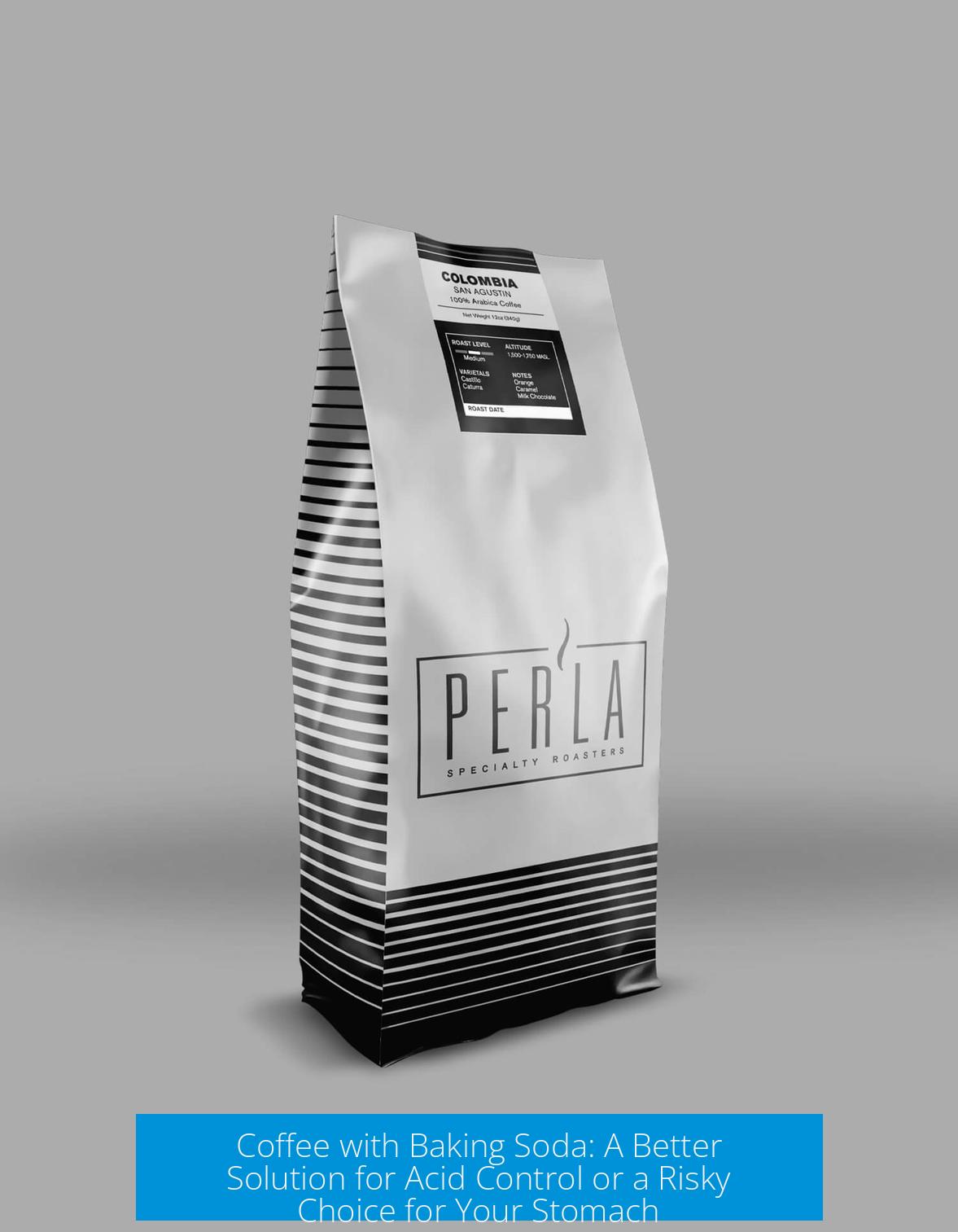


Leave a Comment